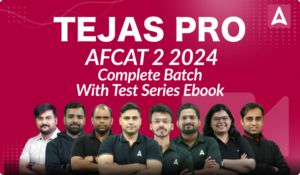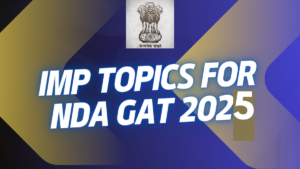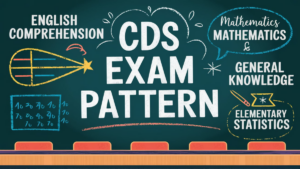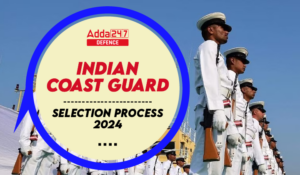AFCAT is the Air Force Common Admission Test. There are four steps between you and your dream job in the Indian Air Force through the AFCAT Exam. The First stage is the written examination of AFCAT. Candidates clearing the cut-off will be called for the second stage in the AFCAT selection process. The Second stage is the Interview stage which is famous with the name of AFSB Interview. Candidates getting recommended in the AFSB Interview will go through the Medical test to get merit-in in the Air Force Academy.
AFCAT interview process is known as the AFSB Interview. AFSB stands for Air Force Selection Board. A candidate after clearing the Afcat exam has to select the Interview dates and Selection Board out of the options available to them. After that, they will receive the Call letter on their Email id. A Candidate have to report on the date and place mentioned in the Call letter on the day of Interview.
Choose the Right AFSB selection centre
Indian Air Force calls both males and females separately for Interview process. An Aspirant should fill up the details for AFSB selection process as soon as possible, as there are limited no. of seats available for any particular center. Delaying the process will let go of the chance to appear in their choice of selection board.
A Candidate should consider the following points while choosing the date and place for AFSB selection process.
- How much time they will need to prepare for the Interview?
- Which Center they can reach on time and with convenience?
The AFSB Interview process is a 5 day long process. The first day is the Screening day where the fate of candidate is decided on whether he will stay on the selection board campus for next four days or not. Those who pass the screening test stays in the center and those who disqualify are sent back on the same day. First time Candidates are given the travel allowance for their travel, if you are a repeater candidate getting screened out on the first day, you are not entitled to receive the Travel Allowance.
AFSB Selection boards
There are five AFSB selection board under Indian Air Force out of which a candidate can choose one for their Interview process.
AFSB 1- Dehradun
AFSB 2- Mysuru
AFSB 3- Gandhinagar
AFSB 4- Varanasi
AFSB 5- Guwahati
Stages in AFSB Interview process
AFSB Interview is 5 day long process which is divided into 2 stages. The first stage is the Screening Test. There are two tests in the screening tests. Candidates qualifying both of them will pass the screen test and stay for next stage 2 of the AFSB Interview. In the Stage 2, Psychological test, Group tests and Personal Interview of the candidates takes place.
STAGE I
Stage 1 of the AFSB (Air Force Selection Board) interview is primarily focused on screening of candidates based on their performance in the following tests.
Officer Intelligence rating Test
STAGE II TESTING
All STAGE-I qualified candidates undergo following tests as part of STAGE-II testing during next four to five days. Fifth day is for CPSS testing (Flying branch).
Psychological Tests
TAT
TAT stands for Thematic Apperception Test. The Thematic Apperception Test is a psychological assessment tool used to evaluate an individual’s personality characteristics, thought processes, and emotional responses to ambiguous stimuli. It is often administered as part of the battery of tests during the psychological assessment phase of the AFSB interview process. During the TAT, a candidate is shown 12 Pictures out of which 11 pictures and last 12th picture is a blank image. candidates are asked to create a story based on each image. These pictures typically depict various interpersonal situations, conflicts, or emotional scenarios. Candidates are instructed to describe what they believe is happening in the image, including details such as the characters’ thoughts, feelings, and motivations, as well as the potential outcomes of the situation.
WAT
WAT stands for Word Association Test. The Word Association Test is a psychological tool used to assess an individual’s thought processes, personality traits, and emotional responses based on their spontaneous reactions to a series of words. During the Word Association Test in the AFSB interview, candidates are presented with a list of 60 words one at a time, and are required to respond quickly with the first word or phrase that comes to their mind upon seeing each word. Candidates are usually given a limited amount of time, often around 15 seconds per word, to provide their responses. The purpose of the Word Association Test is to gain insights into candidates’ subconscious thoughts, attitudes, and associations. Assessors analyze the responses to identify patterns, themes, and underlying personality traits such as creativity, adaptability, assertiveness, emotional stability, and social awareness.
SRT
SRT stands for Situation Reaction Test. The Situation Reaction Test is a psychological assessment tool used to evaluate candidates’ responses to various hypothetical situations or scenarios. During the SRT, candidates are presented with a 60 series of written situations or scenarios, in the form of sentences. Candidates are then required to write down their immediate reaction or response to each situation within a specified time limit, usually around 30 seconds to 1 minute per scenario. The purpose of the Situation Reaction Test is to assess candidates’ cognitive abilities, decision-making skills, problem-solving capabilities, emotional intelligence, and judgment under pressure. Assessors analyze candidates’ responses to gauge their thought processes, approach to problem-solving, adaptability, and suitability for leadership roles within the Indian Air Force.
SDT
SDT refers to the Self-Description Test. During the Self-Description Test, candidates are provided with a blank sheet of paper and instructed to write a self-description within a given time frame, usually around 15 to 20 minutes. Candidates are asked to describe themselves, their strengths, weaknesses, achievements, goals, aspirations, values, and any other relevant personal attributes or experiences. The purpose of the Self-Description Test is to assess candidates’ self-awareness, self-reflection, and ability to articulate their own characteristics, attitudes, and motivations. Assessors analyze candidates’ responses to gain insights into their personality traits, values, and suitability for leadership roles within the Indian Air Force..
GTO Tasks
GTO (Group Testing Officer) tasks are a series of activities conducted during the selection process for officer candidates. These tasks are part of the overall assessment conducted by the GTO, who evaluates candidates’ suitability for leadership roles within the military. The GTO tasks typically include:
Group Discussion (GD)
The first task amongst the 9 GTO Tasks in AFSB is the Group Discussion round. In this round, a Group Testing Officer provides a GD topic to all the candidates of the group. Post this, the candidates are asked to engage themselves in a friendly debate and discussion according to the topic. Another important point to note here is that in the GD round, the candidate is not required to conclude, but they are asked to put up their thoughts regarding the topic provided to them.
GPE or MPE (Group/Military Planning Exercise)
The second task amongst the different GTO Tasks in SSB is the Group Planning Exercise. In this round, the authorities divide the candidates into multiple groups and post this they are provided with a particular situation. The problems are basically presented on a Map, and resources are given to solve the problem. The candidates are given a time frame of 30 minutes to find a possible solution to the situation. In the end, the groups are asked to nominate a candidate who narrates the solution to the authorities.
Progressive Group Task (PGT)
Progressive Group Task(PGT) is a kind of physical activity that every group has to take up. In this round, a set of rules are been defined by SSB and then they are provided with a lot of props i.e. Balli (wooden log), Plank, and rope to tie to the candidates. It is known as Progressive Group Task since with each obstacle the difficulty level increases for the candidates.
Snake Race
Snake Race is the next task of the 9 GTO Tasks in SSB. This also includes different groups who participate in the activity. In this task, the candidates are asked to compete in a race in a tent that is rolled up and appears like a snake.
Lecturette
Amongst all the GTO Tasks in SSB, the Lecturette is one such activity that judges the overall personality of the candidates. In this round, the candidates are been allotted three to four topics amongst which the candidates are required to choose one topic and speak on it for at least 3 to 4 minutes. This activity checks the communication skills of the candidate, fluency of the candidate while speaking, his overall tone while speaking and his knowledge to assess the topics.
Half Group Task (HGT)
In this round, the candidates are asked to two choose two members from the group formed by the authorities. Post this, the candidates are allotted a different set of tasks, then the candidates have to complete the task with the resources in the time allotted by the authorities. This tasks also helps the authorities in checking out the capability of the candidates.
Individual Obstacles
This is one of the most important GTO Tasks in SSB and checks out the basic ability, stamina and physical fitness of the candidates to perform the different set of situations or tasks allotted to them by the authorities. Thus round also checks the decision-making ability of the candidates and the speed with which the candidates can make a decision.
Command Task
The Command Task is the penultimate task conducted by SSB. This round judges the commanding capacity of the candidates who participate in the activities conducted by SSB. In this round, the candidates are asked to choose two members amongst the group formed by the authorities and post this they have to choose an obstacle based on the members and resources allotted to them.
Final Group Task (FGT)
The Final Group Task (FGT) is the last task of the GTO Tasks in SSB. In this round, the task allotted to a candidate is executed by the whole group. The activities of this round are really difficult and very lengthy. The nature of the activities executed in this round is equivalent to the Progressive Group Task.
Medical Examinations
If you are recommended by the Selection Board, you will be sent for the medical examination either at Air Force Central Medical Establishment (AFCME), New Delhi or Institute of Aviation Medicine, Bengaluru.
Merit List
An All India Merit List is compiled on the basis of your performance in the written test and AFSB interview, subject to being medically fit. Based on the vacancies available in various branches / sub branches, joining instructions are issued to join one of the Training establishments.




 Important Topics to Score 300+ in NDA GA...
Important Topics to Score 300+ in NDA GA...
 CDS Exam Pattern 2025, OTA, IMA, INA and...
CDS Exam Pattern 2025, OTA, IMA, INA and...
 Indian Coast Guard Navik Selection Proce...
Indian Coast Guard Navik Selection Proce...





